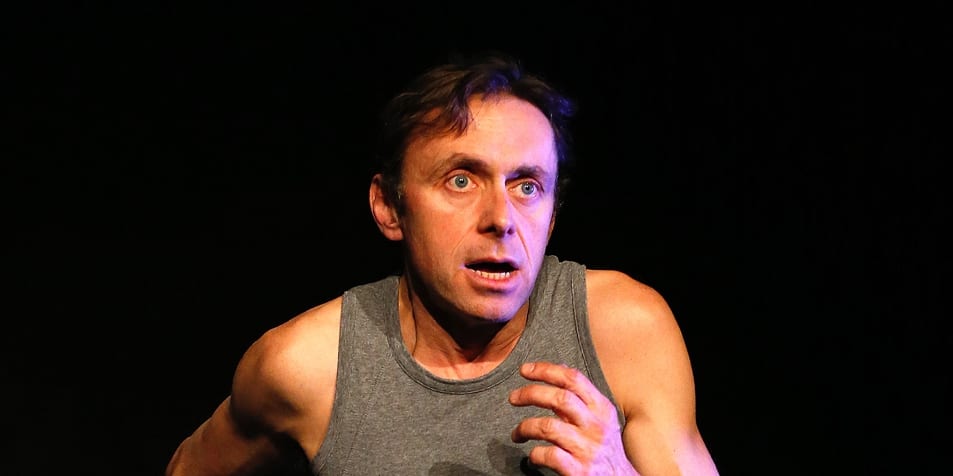When you go to see a play that is called La Solitude du Coureur de Fond (The Loneliness of the Long-distance Runner), the first thing you would expect to see is a bit of running. Patrick Mons’ directing and performance certainly live up to these expectations, and exceed them.
Alone on an almost bare stage, he runs, rarely stopping, without even seeming to be tired or breathless. As the text, written by Alan Sillitoe, is written at the first person, Patrick Mons, while running on the spot, admirably transforms into Colin Smith and tells his story.
The typically British text, translated in French, doesn’t lose its wit and its efficiency, thanks to Patrick Mons’ energy. He manages to make it different and funnier than Tony Richardson’s 1962 film adaptation, which is filled with dark humour.
The main character, Colin Smith, is the incarnation of the 1950’s British ‘angry young man’ and is thus supposed to be a teenager, but director and actor Patrick Mons is not in his teenage years anymore. This choice of casting is not shocking or disturbing at all, and it is even quite efficient to tell the story this way. It brings a different kind of energy to the text and even sheds another light on it. The actor seems to be telling memories from years before, remembering his teenage years with a kind of humour-tainted nostalgia.
The nonchalance with which he acts is backed by the jazz tune played by Esaïe Cid, the saxophonist hidden backstage. It accompanies the running, the music being rhythmed by Patrick Mons’ rapid stride. His running eventually transforms into some sort of crazy, frantic dancing. This breathtaking physical and musical performance unfortunately draws the attention off the text and Colin Smith’s story, along with a background video that has very few uses in the play.
Summary in French :
Dans cette adaptation de La Solitude du coureur de fond qu’il dirige et interprète seul, Patrick Mons raconte l’histoire de Colin Smith sur un air de jazz, tout en courant sur place et sans presque jamais s’arrêter. La différence d’âge avec le héros adolescent du roman ne choque pas et apporte même une nuance intéressante en éclairant le texte d’une nouvelle lumière. On regrette cependant l’utilisation de la vidéo, trop superflue, et le fait que la (superbe) performance de l’acteur dévie l’attention du texte de Sillitoe.

